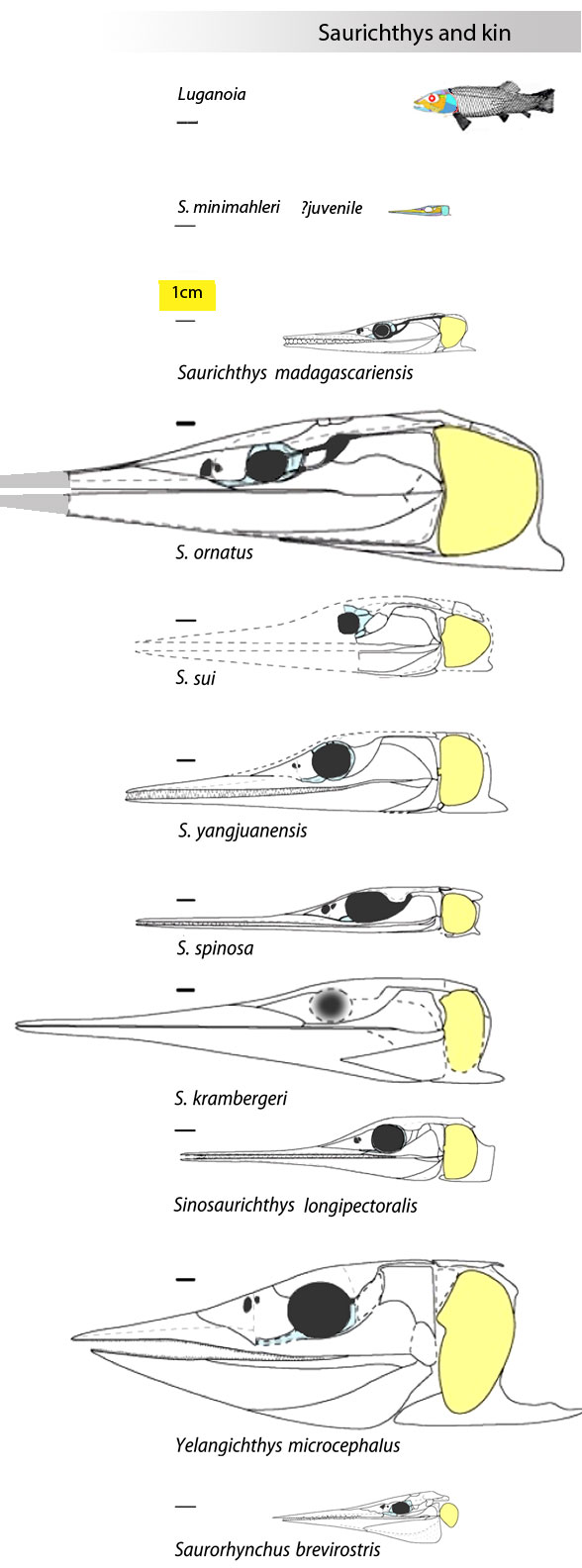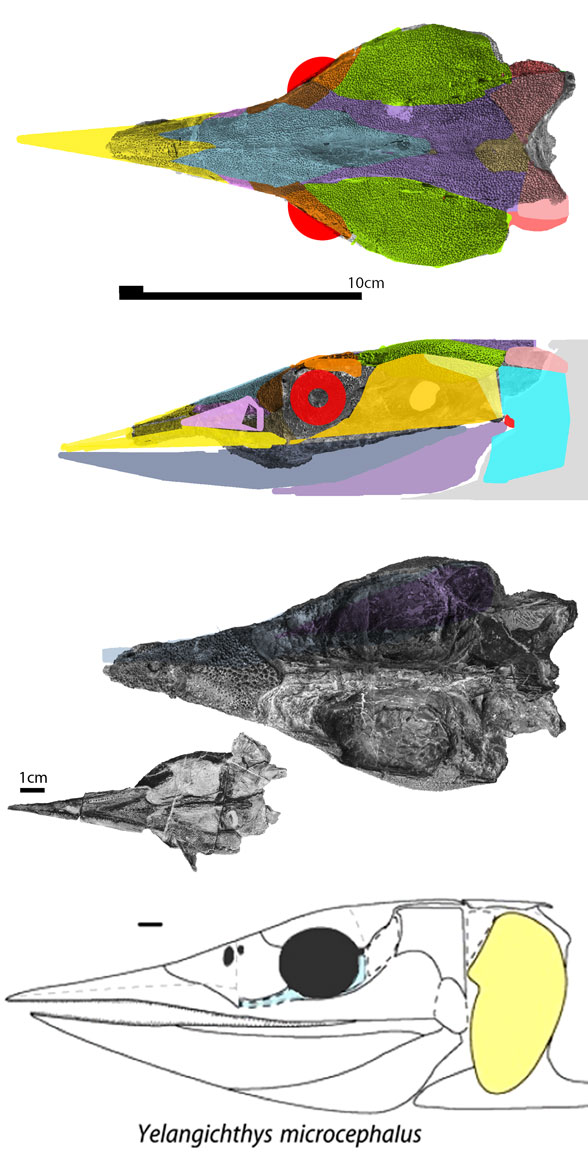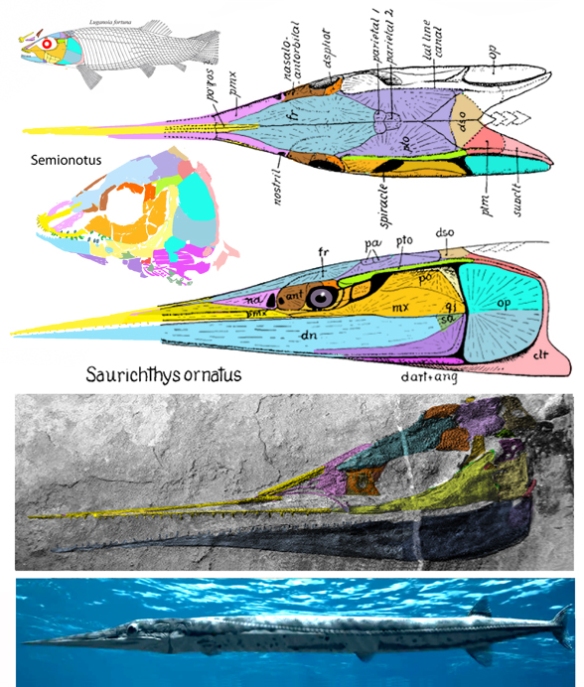Fang and Wu 2022 pulled together
many congeneric and other close relatives of the traditionally enigmatic ‘living torpedo’ of the Triassic, Saurichthys (Fig 1). That data enabled more scoring on Yelangichthys (Fig 2) which was previously scored on a skull lacking lateral facial bones, here restored based on a congeneric specimen (Fig 1).

According to Argyriou et al 2018,
“Their exact phylogenetic position is uncertain, though it is agreed that they are not members of Neopterygii. Historically, they have been seen as close relatives of the Acipenseriformes (which includes living sturgeon and paddlefish) as part of the Chondrostei, though this has been strongly questioned by modern studies, which suggests that it may lie outside the Actinopterygii crown group.”

According to Fang and Wu 2022,
“Saurichthyidae (Saurichthyiformes) have been resolved variously as the sister group to Acipenseriformes (sturgeons and their fossil relatives) (Xu et al. 2014) or Birgeriidae (Argyriou et al. 2018), as a stem chondrostean (Ren et al. 2021), or even a stem neopterygian lineage (Giles et al. 2017).”

Apparently, no one else
has yet tested tiny Luganoia as a proximal outgroup to the Saurichthys clade (Fig 1) and the Actinista (= coelacanths) where they all nest together in the large reptile tree (LRT, 2306 taxa). According to the LRT coelacanths are not related to other lobefins. They developed those lobe fins independently.
References
Argyriou T et al (5 co-authors) 2018. “Internal cranial anatomy of Early Triassic species of †Saurichthys (Actinopterygii: †Saurichthyiformes): implications for the phylogenetic placement of †saurichthyiforms”. BMC Evolutionary Biology. 18 (1): 161.
Fang G-Y and Wu F-X 2022. The predatory fish Saurichthys reflects a complex underwater ecosystem of the Late Triassic Junggar Basin, Xinjiang, China. Historical Biology
https://doi.org 10.1080/08912963.2022.2098023
Wu F, Chang M-m, Sun Yand Xu G 2013. A New Saurichthyiform (Actinopterygii) with a Crushing Feeding Mechanism from the Middle Triassic of Guizhou (China). PLoS ONE 8(12): e81010. doi:10.1371/journal.pone.0081010
Wu F-X, Sun Y-L and Fang G-Y 2018. A new species of Saurichthys from the Middle Triassic (Anisian) of Southwestern China. Vertebrata PalAsiatica 56(4):287–294. pdf
